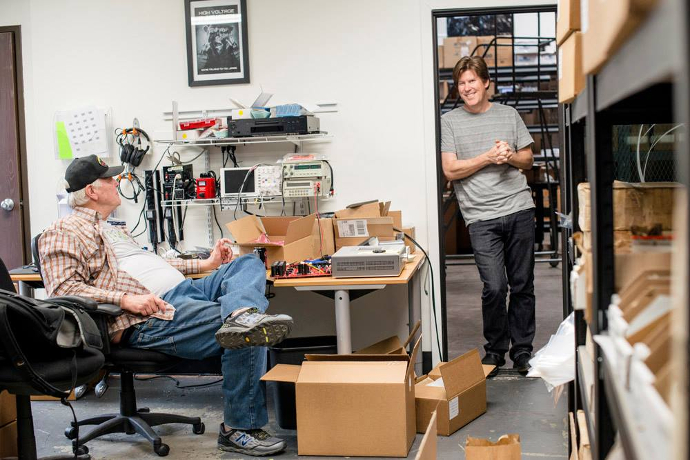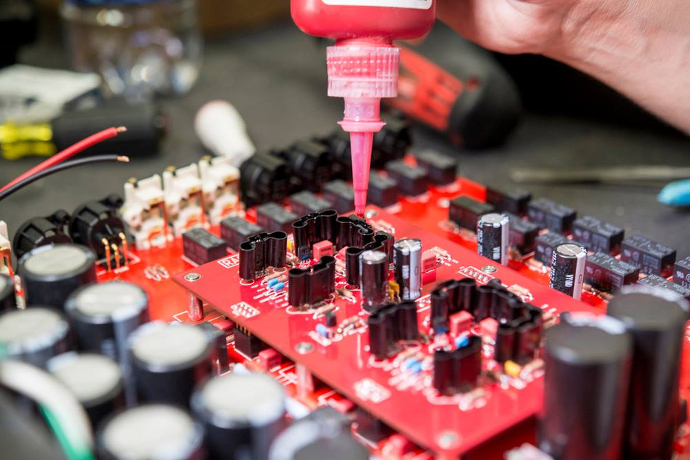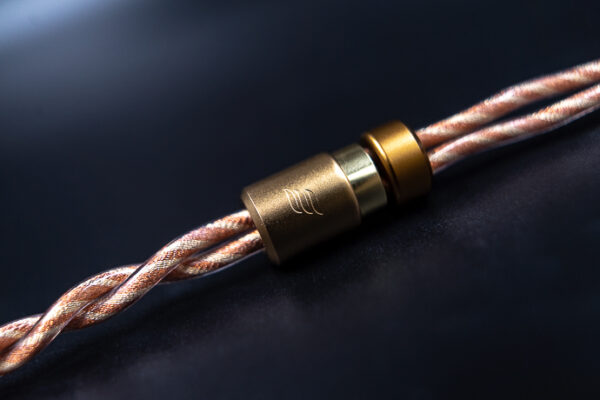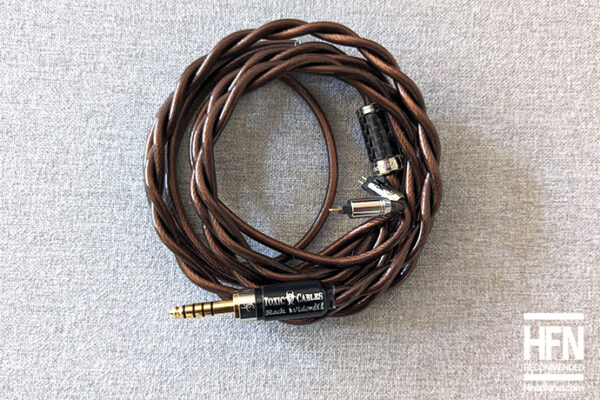Welcome to Linus’ new interview series on Headfonia.com! Every two weeks we will publish an interview with an insider of the audio industry. They will give us a little insight on how they started and what they are up to. We are thrilled to be able to share a little something with all of you.
This episode’s chatting partner is Jason Stoddard of Schiit Audio!

Schiit Audio, Mike Moffat (left) and Jason Stoddard (right)
HFN: Please tell us a little bit about yourself
JS: I’m a professional unicyclist and big into amateur radio…no, wait, this is the audio thing, right? In that case, I’m the founder of Schiit Audio, which is, at the time of this writing, my only business. At Schiit, I’m the analog guy, which means I do pretty much all of the analog design. Headphone amps, speaker power amps, preamps, stuff like that. I also have input into DAC output stages, but the digital side of things is handled pretty much all by Mike, Dave, and Ivana, who do the DAC design, digital filters, and unique algorithms, as well as the firmware and software for all of the products—many of our analog products end up with firmware and a microprocessor running the show, like Freya and Vidar.
HFN: What is your background?
JS: Audio engineering with detours. That’s the best way to put it. When I was in college, I started a speaker company, which went the way most underfunded companies do—it died in a couple of years. Luckily, I was also working as an engineer at Sumo, first as a staff engineer, then chief engineer, then vice-president, engineering. This was in the late 1980s and early 1990s. At that time, I also met Mike Moffat, my current business partner, and did some consulting work for Theta at the time, most notably designing the Cobalt 307 DAC. But the detours started when Mike decided that the high end was, well, getting kind of ridiculous in terms of pricing, and also when I realized I had a knack for marketing. So I started a marketing agency, Centric, which I ran for over 20 years. It was only towards the end of the run for Centric that I swerved back into audio again, and started Schiit.
HFN: How did Schiit start?
JS: The 2009 downturn. It was the first time I’d seen marketing budgets get slashed to the bone across all industries. We’d been through the 2001 Web 1.0 disaster, which we’d weathered fairly well (until the ancillary industries like optical networking started falling apart), but 2009 was brutal. Centric went from half a floor in the TV Academy building in North Hollywood to a semi-virtual agency in a small space in old town Newhall. (Ironically, Centric was arguably most successful in 2010-2015, after we’d given up the silly glitz.) So, with Centric stumbling, I started looking for other stuff to do. I’ve been writing and publishing science fiction for a while, so I tried some more mass-market novels through Penguin Books. Those didn’t do so well. And, while I was spending time writing, my wife bought me a set of headphones (AKG K701s, remember those?), and that reawakened the whole audio thing. Another friend got me an inexpensive tube headphone amp, which ran the K701s OK, but I kept wondering if I could do better. Eventually, I put together a couple of designs, which early listeners thought sounded good. I asked Mike if he felt like doing a DAC for the company, and he responded in the affirmative (I think not really knowing if anything would ever come of it,) and so I had a couple hundred headphone amps made…and they started selling. And Mike started doing DACs, first the Bifrost, then others. And that’s kinda the story of how we started.

Schiit Audio
HFN: How long does it in average for Schiit to put out a new product?
JS: A lot longer than in the old days! Heck, we went from concept to production on the original Lyr in less than 4 months. Now, it’s more like 12-18 months. Or more. Which, to put it mildly, is a whole lot better than rushing through things. Lyr didn’t take long because (a) we were lucky, and parts came in on time and right, and (b) we didn’t have a large amount of custom parts, and (c) we didn’t have the testing and certification requirements we now have. Right now, many new products require quite a few custom parts—which includes tooling of die-casting molds or plastic injection molds. This means we can’t start on a dime. Heck, the upcoming turntable has been in development for almost 5 years, and we’re still not shipping. Also, many new products either require firmware or software—or are an entirely new concept that requires fundamental research, like The Gadget, which, again, we still haven’t shipped. Add to that the fact we have to meet CE and FCC certifications, and spinning up new products quickly simply isn’t in the cards. But again, a longer development cycle is better. It gives us a chance to really wring out a design and make sure we don’t have any unexpected glitches when it launches.
HFN: What is the most interesting part of designing a new product?
JS: For me, by far, it’s the foundational R&D. A lot of people think that audio is a “settled science,” and that it doesn’t take much more than a few op-amps and Class D modules to get perfectly fine performance (and, you know what, they might be right—but that’s not what we do.) I like to experiment with new ways of doing things—different tube hybrid topologies that help us get around the limitations of hybrids…things like eliminating the need for interstage coupling capacitors, or playing one type of devices’ transconductance against another for higher performance. I like to look at new ways of doing output stages, ones that address some of the fundamental limitations of, say, Class AB output stages. We have a product coming out shortly that includes both a new tube hybrid topology and a new type of output stage. And we have some exciting new stuff coming on the balanced front—once I work out the thermal instability! Because that’s the problem with foundational stuff—you’re working at the fringes. There are a lot of gotchas. It took me several years and thousands of hours of running a dozen prototypes to be comfortable with the Pivot Point gain stage in Jotunheim. But working at the base level is the most fun.
HFN: What is the Schiitr?
JS: That’s our retail store, opened last year on April 1. It has pretty much all of our headphone gear, as well as a small speaker listening room. We only sell Schiit product, not anything else. It’s in old town Newhall, ironically in Centric’s old office. It’s open from Thursday to Sunday, and it provides a way for people to come and listen to our gear if they’re in the Los Angeles area.
HFN: Are you planning to open more Schiitrs?
JS: If we can. We’re actually looking into it right now. I can’t promise anything, but I’d like to have additional Schiitrs on line this year. In the meantime, we’re also doing what we call “SchiitKit Shows,” where we send a complete kit of all of our products out to someone who wants to organize a show—and we pay for their time to organize it. That has been very successful in getting our schtuff in front of a larger audience. Of course, this works far better for smaller products—desktop products—than speaker amps, hence it would be nice to have more Schiitrs.
More Schiit on the next page!









Totoro
A great read. Always love to hear from the guys at Schiit!
Thanks Headfonia.
Dmitri
Great interview!
Too bad the guys aren’t going to make Streamers.
I think they could at least do hats for Raspberry or something, there is no need for proprietary software!
OfficialYussuf
Thank you, Cristina! You must try them!!
andrew doan
” The two audiophiles are Jason Stoddard, formerly of Sumo, and Mike Moffat, formerly of Theta.” That ‘s enough said about the two gifted hi-end audio designers and their proven well-praised products.
Jeep
Great review! I’ve been considering the Magni 3 and Modi 3 combo, thanks for the in-depth analysis.